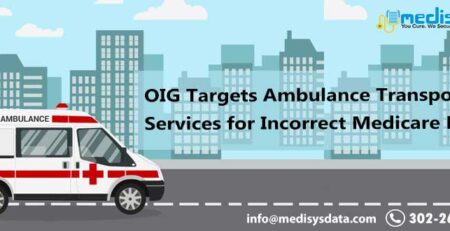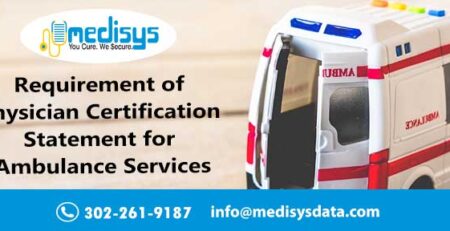Ambulance transportation billing and coding involves a various compliance challenges, which if not followed can result in decreased revenue and an organized billing cycle. The ambulance industry as a healthcare field over the years has seen a significant number of false claim cases, fraud investigations, and audit activity, and other types of charging related cases. This is the very reason ambulance transportation billers and coders fully understand the nuances of reimbursement to successfully sidestep these unwanted errors.
Here are some significant issues in ambulance transportation billing that includes some of the most common and serious challenges in the field of ambulance medical billing.
What’s the necessity?
The first and the most important thing is the medical necessity for ambulance transportation service, which continues to be the biggest compliance issue in billing. Like any other type of healthcare service, ambulance transportation must meet medical necessity rules in order to be covered. Nevertheless, when it comes to ambulance billing and coding, the medical necessity criteria seem to be vague and less defined than in other medical specialties.
According to the federal law medical necessity for ambulance transportation is when other means of transportation are contradicted by the patient’s condition. While the new CMS regulations and manuals provide some added clarification, the medical necessity standards for ambulance transport are aligned on whether the patient could safely be transported by other means.
In simple terms if a patient could safely be transported by car, a wheelchair van, stretcher van, or any other means, then it should remembered that the medical necessity is not met, and in this scenario reimbursement cannot be made. It is also critical to note that when evaluating medical necessity, only the patient’s condition matters; it is irrelevant if those other means of transportation are unavailable.
Billing for Advanced Life Support
Another major compliance risk area in ambulance transportation billing is the use of high paying advanced life support (ALS) codes in cases where lower reimbursed basic life support codes should be used.
ALS levels of service can be charged only when the skills required to care for the patient exceed the scope of practice of an EMT-Basic in that jurisdiction. As a result, an ambulance biller must know what the approved scope of practice consists of for EMTs in that jurisdiction, and what skills require licensing or certification above that level.
Training makes you better
Lastly, a vital part to keep up with ambulance transportation billing and coding compliance is to ensure that all your billers are precisely trained in the unique world of ambulance billing and coding. It is precarious to assume that billing and coding knowledge of other healthcare specialties are automatically applicable to ambulance transportation billing. Keep in mind that ambulance transportation coding and billing has its own twists and peculiarities, and billers should receive specific training related to ambulance in order to follow the billing compliance.











